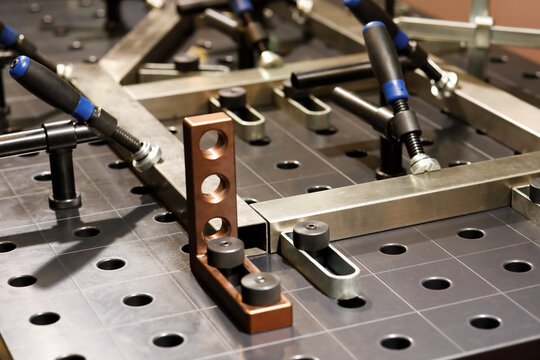Jig or Fixture Design Problems and Solutions
For some engineers, jig or vibration test fixture may be considered just like an adapter. As long as the DUT can be mounted to vibration machine platform, then it is good enough. But for test engineers with experience, the design of the vibration test fixture is very important.
MIL-STD-810G-Method 514.6, Chapter 4.2.2.4.a:
“Test fixture resonance. Prior to test, a test fixture survey should be conducted to ensure that the structural characteristics of the test fixture do not introduce uncontrollable resonances into the test setup. The survey may be experimental or analytical. If problematic resonances are identified, modifications should be made to the test fixture to shift the resonance beyond the frequency range of the test or to dampen the resonance in order to minimize the effect on the test.”
Part of MIL-STD-810G above shows how critical is a Jig or Vibration Test Fixture.
Common problems in Jig or Vibration Test Fixture
Test fixture which is not properly designed will “over tested” or “under tested” product.
Product which is over tested will be less cost effective. On the other hand, product which is under tested will have higher chances to fail in the actual service environment, causing even higher cost for “recall” and improving the design.
Solutions?
MIL-STD-810G mentions the two ways of modification shall be done to the test fixture:
Shift the resonance beyond the frequency range.
Dampen the resonance minimize its effect.
MIL-STD-810G also mentions that the test fixture evaluation can be performed by experimental and/or analytical.
Tips in designing a Jig or Vibration Test Fixture
There are two key important factors that need to be considered for designing a good vibration test fixture:
Vibration test fixture must be designed to be as light as possible in order not to significantly reduce the testing capacity of the vibration test machine
Vibration test fixture must be designed to be as stiff as possible to allow the resonance to lie far beyond the upper limit of the test frequency range
From the material perspective, there are 2 types of materials used for vibration test fixture:
Aluminium
Magnesium
Steel is not commonly used for vibration test fixture due to its weight and light damping value. The most common material used is aluminium, since it is much lighter and has better damping characteristic than steel. If we have enough budget, then we can also try to use magnesium.
Is there any tool that can help us to design vibration test fixture? The answer is YES, if you have capability to perform Finite Element Model (FEM) simulation, then this will be very useful for predicting the dynamic characteristic of your vibration test fixture. Of course, the more complex design you have, it will need more modelling skill on your simulation.
Most of FEM software may offer below type of simulations:
Normal Mode
Frequency Domain Response
Time Domain Response
For designing vibration test fixture, performing normal mode simulation should be good enough, since we will be able to obtain the resonance frequencies and the mode shape at each resonance.
By having the mode shape, we should be able to understand better on how to increase the stiffness or reduce the mass which are not contributing to the structure stiffness. Unless it is not possible to push the resonance out from the test frequency range, then we may want to use the Frequency Response Simulation. Running frequency response simulation will be much more challenging compare to normal mode since the accuracy of the result will not be depending only on mass and stiffness, but also the damping properties that we put into the simulation.
Learn More About Our Solution Vibration Fixture Testing Designs →
How can we help you?
Interested in our vibration testing fixture design?
Send us your inquiry via the Fixture Design Form and we will be pleased to help you.



